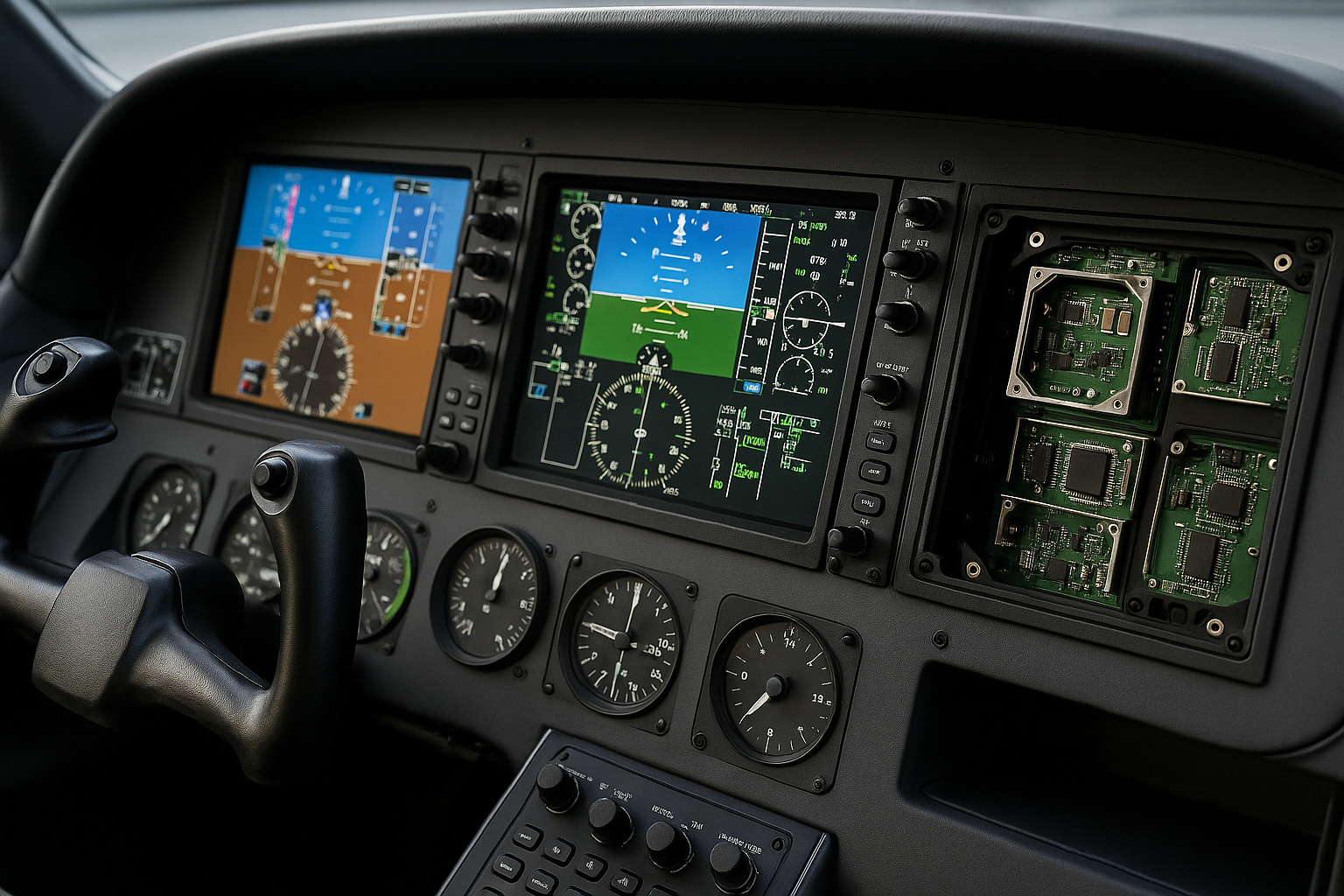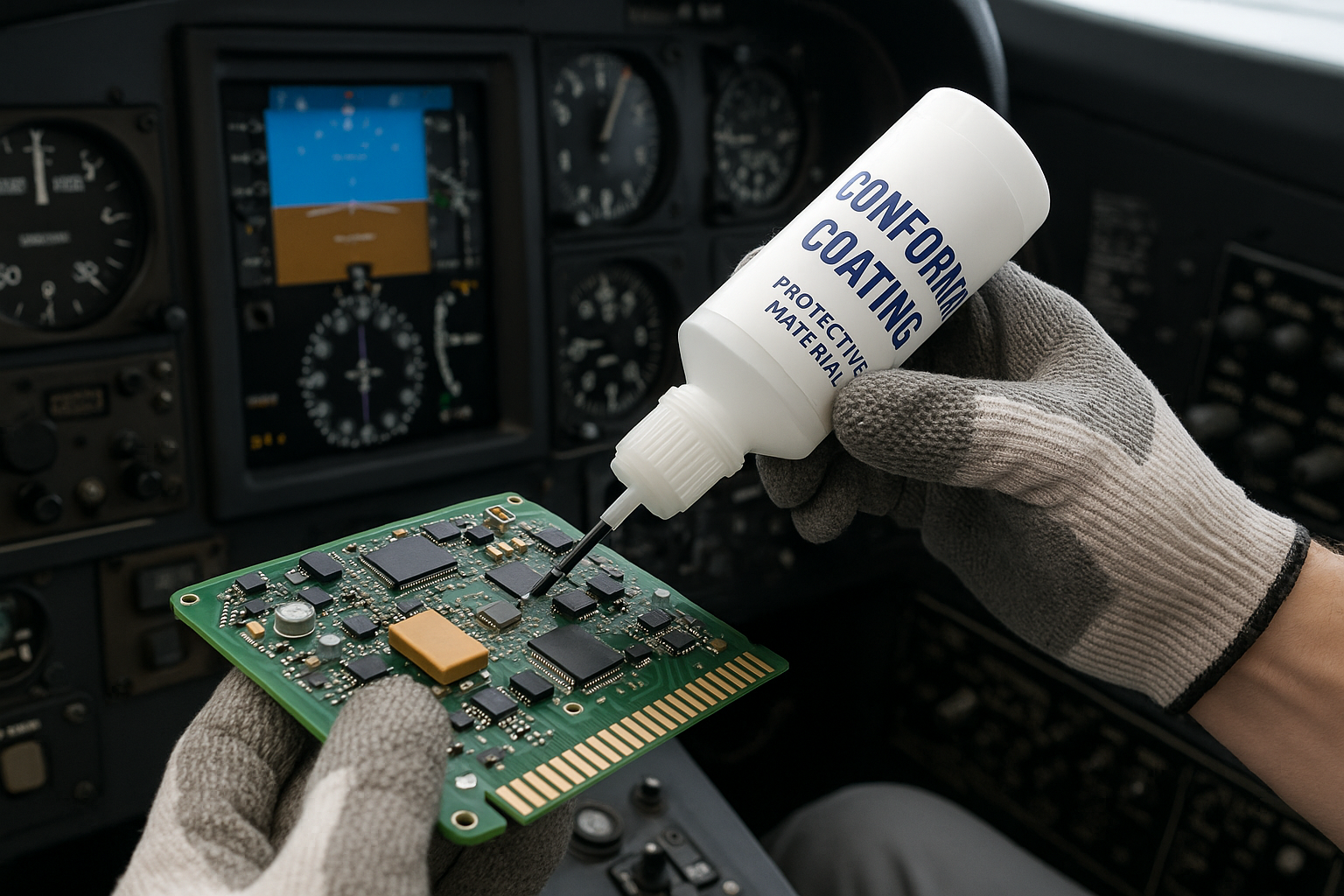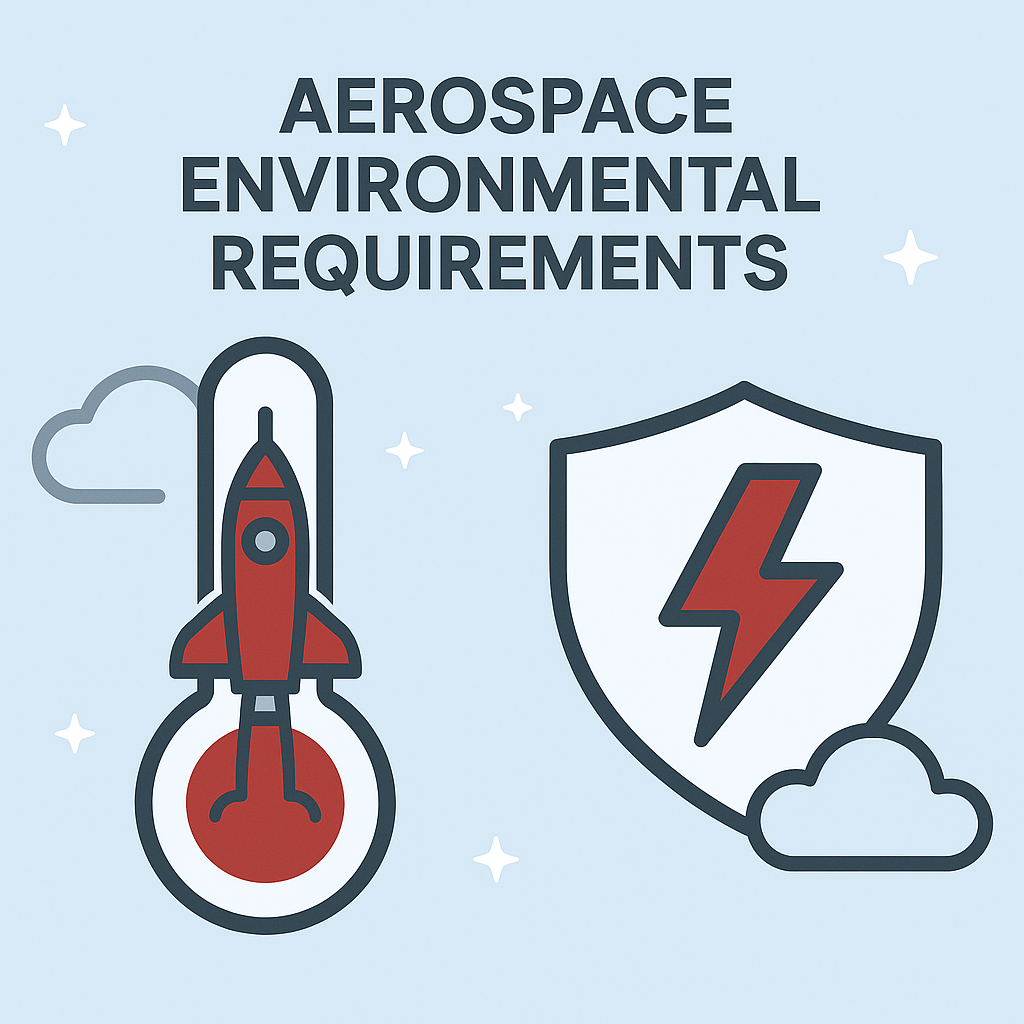Flight Control & Avionics
Flight Control & Avionics
Aerospace flight control and avionics systems demand precision, reliability, and resistance to extreme environments. From cockpit controls to autonomous navigation modules, the electronics that power modern aircraft and spacecraft must perform flawlessly in the face of thermal cycling, vibration, and altitude-related stresses.
CAPLINQ offers a range of advanced materials—including encapsulants, conformal coatings, and wire marking inks— specifically developed for aerospace PCB assemblies, sensors, and control modules. These materials deliver high dielectric protection, excellent adhesion, and long-term resistance to moisture and chemicals, ensuring mission-critical electronics are protected from production through deployment.


Where are materials used in avionics?
- Printed Circuit Boards (PCBs): Conformal coatings for moisture and chemical resistance.
- Flight Control Modules: Encapsulants for vibration and fatigue protection.
- Wire Harnesses & Connectors: Polyimide inks and insulating compounds.
- Sensors & Accelerometers: Thermally stable resins and moisture barriers.
Key Aerospace Requirements
- High dielectric strength
- Resistance to humidity, salt fog, and corrosion
- Thermal stability from -55°C to +200°C
- Void-free encapsulation for vibration damping
- Low-outgassing conformal coatings


JNC PI-6643-004 Polyimide Ink
395°C-curable polyimide ink for permanent wire and PCB marking, ideal for extreme flight environments.
View Product

HUMISEAL 1B73 Conformal Coating
Aerospace-grade moisture-resistant acrylic coating for printed circuit boards in avionics.
View Product

LOCTITE STYCAST 2850FT
Filled epoxy encapsulant for vibration resistance and high-temperature sensor protection.
View Product
Why choose CAPLINQ?
CAPLINQ is a trusted partner to aerospace OEMs and Tier 1 suppliers, providing tailored support for material selection, datasheet requests, compliance certification, and logistics. Our materials meet MIL-spec, ESA, and NASA compatibility requirements and support lightweighting, miniaturization, and fail-safe reliability.
Frequently Asked Questions about Flight Control & Avionics Materials
CAPLINQ provides a range of conformal coatings, encapsulants, and polyimide inks that are engineered for aerospace environments. These materials are selected based on their dielectric strength, thermal stability, resistance to vibration, and compatibility with aerospace substrates such as FR-4, aluminum, and polyimide flex circuits.
How are materials selected for vibration resistance in flight modules?For components like flight computers and sensor modules that experience continuous vibration, materials must provide mechanical damping and maintain adhesion over time. Filled epoxy encapsulants such as LOCTITE STYCAST 2850FT offer excellent vibration resistance and dimensional stability over wide temperature ranges.
What is the recommended conformal coating for aerospace PCBs?HUMISEAL 1B73 is a widely used acrylic conformal coating that provides robust moisture protection while meeting aerospace environmental resistance standards. It cures quickly and is compatible with manual or automated spray processes.
Yes. Many CAPLINQ-supplied materials meet specifications such as MIL-I-46058C, IPC-CC-830B, ESA ESCC, or NASA outgassing standards. For specific documentation or test results, please contact our technical team.
Can these materials withstand high-altitude pressure and thermal cycling?Absolutely. CAPLINQ materials for avionics are formulated for pressure differentials and temperature swings seen in flight profiles. Encapsulants and coatings maintain electrical insulation and adhesion from -55°C to 200°C, making them suitable for both commercial and defense aerospace use.
Do you provide support for product qualification and selection?Yes. CAPLINQ works directly with engineers to ensure material compatibility and can assist with datasheets, test data, and application support. Whether you're qualifying a new aerospace platform or retrofitting an existing one, our team is ready to help.


